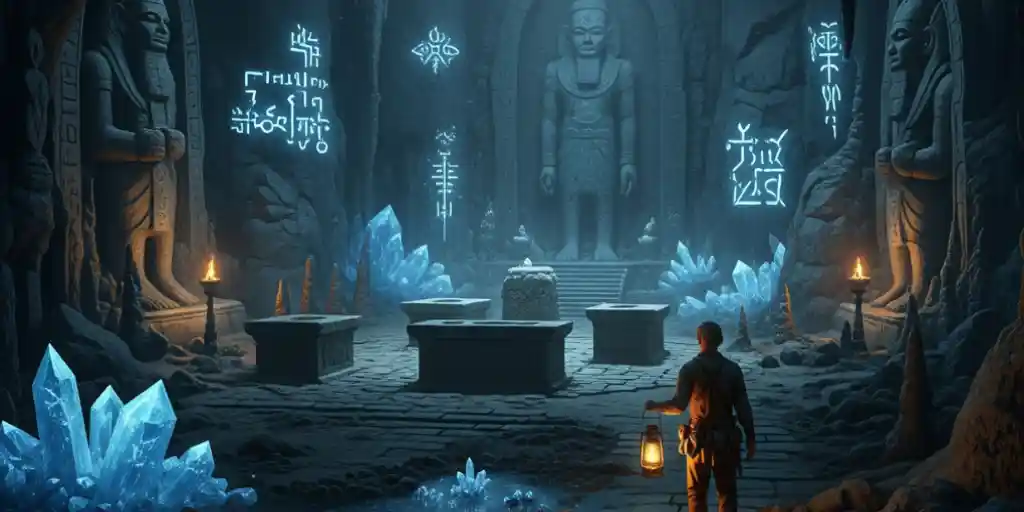Beneath forests, deserts, and mountains lie underground temples and cave sanctuaries once dedicated to gods the world no longer worships. These eerie, sacred chambers echo with forgotten rituals, faded symbols, and the mystery of civilizations long gone.
In this blog, we’ll descend into the hidden underground caves once ruled by forgotten gods, revealing where they are, why they were built, and how to explore them respectfully. Whether you’re a mythology lover, spiritual seeker, or offbeat adventurer—this is your path into the earth’s ancient heart.
🔍 What Are These Underground Caves?
These are not ordinary caves—they were:
-
Temples, sanctuaries, or ceremonial spaces
-
Carved or repurposed by ancient cultures for worship
-
Filled with faded deities, murals, idols, or altars
-
Often built in secret, during times of war or exile
They were meant to last forever—and many have.
💡 Why Worship Was Taken Underground
Ancient people built cave temples when:
-
Persecution or conflict forced secret worship
-
Gods were believed to dwell in darkness or earth wombs
-
Sun, moon, and earth cycles aligned beneath the ground
-
They sought natural acoustic or mystical resonance
So yes—these caves were not only places of prayer, but portals to the divine.
✈️ Legendary Regions With Forgotten Cave Temples
| Region | Deity or Culture | Why It’s Forgotten |
| Cappadocia (Turkey) | Hittite & early Christian gods | Buried by time and war |
| Maharashtra (India) | Buddhist + Jain + Hindu mix | Abandoned during invasions |
| Petra Caves (Jordan) | Nabataean desert gods | Decline of local religion and trade |
| Peru’s Chavín de Huántar | Pre-Incan storm/fertility gods | Lost due to conquest and colonialism |
| Ireland’s Oweynagat Cave | Pagan underworld goddess | Supplanted by Christianity |
🛡️ Top Tricks to Explore Forgotten Cave Shrines Safely
Let’s explore the smartest and most respectful ways to discover these underground temples while preserving their mystery and legacy.
1. ✅ Research the Mythology Before You Visit
Why it matters: You’ll understand what you’re looking at—and what not to touch.
Cave Hack:
-
Study the gods once worshipped there—many are now obscure.
-
Bring a printout or offline myth guide to read on site.
2. 🔦 Use Headlamps, Not Flash Photography
The trap: Bright light damages pigments or disturbs wildlife.
Why it’s dangerous:
-
Some cave art is over 2,000 years old.
-
Bats and other species live undisturbed in these spaces.
Exploration Tip:
-
Use red-light mode or dimmable headlamps.
-
Avoid flash or high-lumen torches inside altars or icon zones.
3. 🗺️ Hire Local Spiritual or Tribal Guides
Problem: Some sites are sacred or taboo without local permission.
Why it’s important:
-
Local guides often carry generational knowledge and rituals.
Cave Explorer Trick:
-
Ask at heritage centers, tribal offices, or local temples.
-
Show respect by observing entry rituals if offered.
4. 🧘 Visit at Dusk or Dawn for Mystical Alignment
Why it matters: Many underground temples align with sun rays or seasonal shifts.
Cave Hack:
-
Arrive early or stay late to see how light enters through cracks.
-
Some gods were believed to “awaken” at these times.
5. 🛑 Don’t Disturb Offerings, Bones, or Water Pools
Problem: These aren’t just caves—they're active spiritual sites to many.
Why it’s sacred:
-
Bones may be ancestral or ceremonial.
-
Pools might be used for blessings or rituals even today.
Respect Rule:
-
Never step into shrine pools or remove cave stones.
-
If you see flowers, coins, or incense—assume it’s still holy.
💳 Best Tools to Find and Understand Ancient Cave Shrines
| Tool/Source | Use Case | Special Feature |
| Sacred Land Film Project | Locates living sacred sites | Global spiritual cave listings |
| Mythopedia or World Myth App | Learn about forgotten gods | Categorized by region and belief system |
| Gaia GPS + Satellite Mode | Spot isolated cave structures | Terrain + archaeological overlays |
| UNESCO World Heritage Docs | Cave temple preservation records | Maps, historical context, and access rules |
| Google Scholar / JSTOR | Research lesser-known deities & sites | Access to academic cave studies |
🔍 Real User Example
“In southern India, I crawled into a jungle cave with a guide who knew the old gods. We found a fading carving of a three-eyed goddess—her name isn’t in any book. We left flowers and came out in silence.” – Lina, Spiritual Trekker
🧠 Pro Tips to Remember
-
Always inform someone of your cave location before entering
-
Wear shoes with grip—many caves are damp and slippery
-
Use a neck gaiter or mask in bat-heavy zones
-
Don’t chant or play music unless you’re invited to
-
Respect silence—many caves are still used in prayer
💬 Final Thoughts: Enter Like a Pilgrim, Not a Tourist
Underground caves are more than geological wonders—they are echoes of gods once adored and feared. When you step inside, you’re not just exploring the earth—you’re entering a sacred memory.
✅ Don’t just explore—descend with humility.
✅ Don’t just look—listen to the silence.
✅ Don’t just document—honor what you witness.
The gods may be forgotten—but their temples still breathe.
📌 FAQs About Underground Cave Temples
Q1. Is it safe to explore ancient caves alone?
Not recommended. Go with a guide or buddy. Many caves are unstable or remote.
Q2. Can I take photos inside sacred caves?
Only if permitted—and never with flash. Many restrict cameras completely.
Q3. Are there entrance fees for cave shrines?
Some are government-protected and charge fees. Others are free but donation-based.
Q4. What should I bring for such an exploration?
Headlamp, backup light, respectful clothing, water, map printouts, and reverence.
